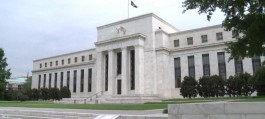Oil prices rose in early trading on Thursday, extending gains from the previous session amid signs of strong demand in the United States, where data showed inflation rose less than markets had expected, supporting the move to cut interest rates, which could boost demand further.
price movement
Brent crude futures rose 42 cents, or 0.5 percent, to $83.17 a barrel, while U.S. West Texas Intermediate crude rose 43 cents, or 0.6 percent, to $79.06 by 0032 GMT.
U.S. consumer prices rose less than expected in April, boosting financial markets' expectations that the Federal Reserve will cut interest rates in September, which could cool the dollar and make oil cheaper for holders of other currencies.
Data from the Energy Information Administration showed that U.S. crude oil, gasoline and distillate inventories fell, reflecting increased refining activity and fuel demand.
The Energy Information Administration said crude inventories fell by 2.5 million barrels to 457 million barrels in the week to May 10, compared with analysts' average expectations for a draw of 543,000 barrels in a Reuters poll.
Prices are also supported by geopolitical tensions.
In the Middle East, clashes are taking place between Israeli forces and Hamas militants across Gaza, including in Rafah.
Talks brokered by Qatar and Egypt aimed at reaching a ceasefire have stalled, with Hamas demanding an end to attacks and Israel insisting this will not happen until the movement is eliminated.
Gains were pared after the International Energy Agency cut its forecast for oil demand growth in 2024, widening the gap between its view and that of the Organization of the Petroleum Exporting Countries (OPEC).
The International Energy Agency said global oil demand this year would grow by 1.1 million barrels per day, down 140,000 barrels per day from its previous forecast, largely due to weak demand in advanced OECD countries.







































